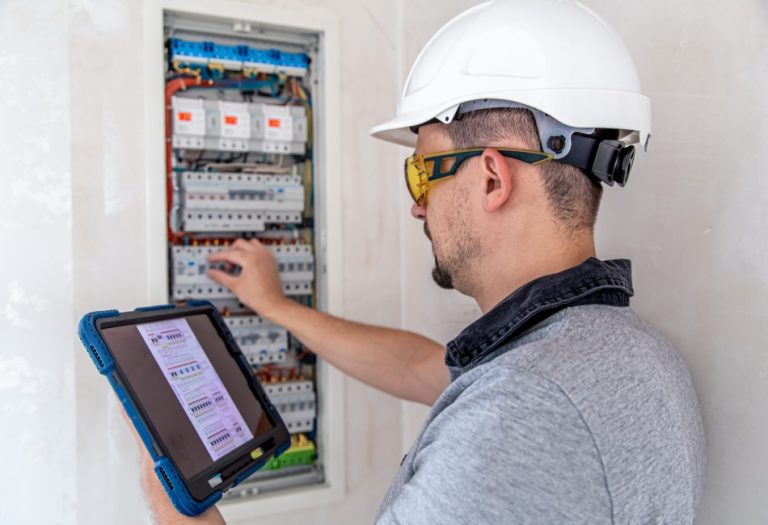Online Support and Suboxone Treatment for Opioid Addiction Recovery
For many struggling with opioid addiction, the idea of treatment can feel overwhelming: commuting to clinics, taking time off work, or facing stigma. But modern addiction care has evolved. With online support and Suboxone treatment for addiction, recovery is more accessible than ever.
This guide breaks down how virtual care combined with medication-assisted treatment (MAT) can help Ontarians reclaim their lives from opioid dependence.
Why Suboxone Works for Opioid Addiction
Suboxone (a combination of buprenorphine and naloxone) is a frontline treatment for opioid use disorder. Unlike methadone, which requires daily clinic visits, Suboxone offers flexibility, especially when paired with telehealth services. Suboxone solves three big problems for people trying to quit:
- It stops the torture – The buprenorphine eases withdrawal and cravings just enough so you can function but won’t get you high.
- It can’t be abused – The naloxone mixed in punishes anyone trying to shoot or snort it, while working fine when taken properly.
- It fits real life – No daily clinic visits. Take it home while keeping your job and privacy.
But here’s the catch: Suboxone alone is not the cure. It just gives you the stability to do the real work: therapy, rebuilding relationships, and fixing what drove you to use in the first place.
The smartest approach is to use Suboxone as a tool, not a crutch. Combine it with counseling and real lifestyle changes, and it can help rewrite your story.
Who Should Consider Suboxone?
Suboxone isn’t the right solution for everyone struggling with opioids, but it can be life-changing for specific situations. Doctors typically recommend it most strongly for:
1. People Hooked on Short-Acting Opioids
Suboxone works particularly well for those dependent on:
- Heroin
- Prescription painkillers like oxycodone or hydrocodone
- Other short-acting opioids that cause frequent withdrawal symptoms
2. Patients Who Can’t Pause Their Lives
The flexibility of Suboxone makes it ideal for:
- Working professionals who can’t take weeks off for rehab
- Parents who need to care for children while in treatment
- Students who can’t put their education on hold
3. Those Far from Treatment Centers
For patients in remote areas where:
- The nearest methadone clinic might be hours away
- Regular in-person visits aren’t practical
- Telehealth provides the only realistic access to care
How Online Support Enhances Suboxone Treatment
Virtual care has transformed addiction treatment, removing barriers like travel and wait times. Here’s how it complements Suboxone therapy:
1. Telemedicine for Suboxone Prescriptions
- Initial assessments – Doctors evaluate patients via secure video calls.
- Ongoing check-ins – Doses are adjusted remotely based on progress.
- Urgent support – Patients can reach providers during cravings or crises.
Note: In-person visits may still be required for urine tests or emergencies.
2. Online Counseling and Therapy
Suboxone stabilizes the body, but therapy addresses the mind. Virtual options include:
- Cognitive Behavioral Therapy (CBT) – Identifies triggers and builds coping skills.
- Group therapy – Peer-led sessions via Zoom or specialized apps.
- Mindfulness programs – Teaches stress management without opioids.
3. Digital Support Communities
Isolation fuels relapse. Online platforms provide:
- 24/7 peer chats – Anonymous forums for immediate help.
- Recovery apps – Track progress, cravings, and medication schedules.
- Virtual NA meetings – Accessible from anywhere, anytime.
For those ready to start, online support and Suboxone treatment for addiction can be a game-changer.
The Step-by-Step Process of Starting Suboxone Online
Getting started with online Suboxone treatment isn’t complicated, but it does follow a specific medical protocol. Here’s exactly what patients can expect at each phase of the process:
1. Medical Evaluation
Doctors don’t just hand out Suboxone like candy; they’ll dig into your full story first. They need to know what you’ve been taking, how much, and for how long before deciding if this treatment makes sense for you.
It’s not about judging; it’s about making sure the medication won’t cause more harm than good. During the evaluation:
- A telehealth doctor reviews opioid use history, health conditions, and withdrawal severity.
- Lab tests (via local clinics) may be required to confirm opioid levels.
2. Induction Phase
The first days on Suboxone are crucial. Starting too early or at the wrong dose can make withdrawal worse instead of better. That’s why this phase requires careful coordination:
- Patients must be in mild-to-moderate withdrawal before their first dose to avoid complications.
- Dosing starts low and adjusts under virtual supervision.
3. Maintenance & Monitoring
Once stabilized, the focus shifts to long-term recovery. Regular check-ins prevent relapse and adjust treatment as needed:
- Weekly video check-ins initially, then less frequent as stability improves.
- Regular drug screenings (often at local labs) to ensure compliance.
4. Integration With Other Services
Suboxone works best when combined with comprehensive support. Quality programs don’t just prescribe – they connect patients to additional resources:
- Providers connect patients to online counselors or support groups.
- Family members may join sessions to learn how to support recovery.
This structured approach balances medical safety with the convenience of telehealth, giving patients the best chance at lasting recovery.
Common Concerns About Online Suboxone Treatment
Patients considering virtual Suboxone treatment often have understandable questions. These are the real-world concerns that come up most often in telehealth addiction medicine, and what the evidence shows about each one.
1. “Is virtual care as effective as in-person?”
This question tops nearly every patient’s list. The truth might surprise those used to traditional clinic models:
- Studies show telehealth MAT has similar success rates for motivated patients.
- The convenience often leads to better adherence.
2. “What if I need help after hours?”
Opioid withdrawal doesn’t follow business hours, and neither should support. Quality programs anticipate this need:
- Many clinics offer crisis lines or emergency protocols.
- Local hospitals can assist with severe withdrawal.
3. “Will my privacy be protected?”
In small communities especially, confidentiality worries keep many from seeking help. Here’s how reputable programs safeguard patients:
- Reputable providers use HIPAA-compliant platforms.
- Prescriptions are discreetly sent to local pharmacies.
These solutions have been refined through years of telehealth experience, addressing the very real fears that once made online treatment seem risky. The answers often reassure patients more than generic promises about “quality care.”
Who Isn’t a Good Fit for Online Suboxone?
While telehealth expands access, it’s not for everyone. Consider in-person care if:
- Severe addiction – Requires close medical monitoring.
- Complex health issues – E.g., liver disease, psychiatric conditions.
- Unstable living situation – No safe place to store medications.
Making It Work: Tips for Success
Suboxone treatment isn’t magic – it requires active participation. These aren’t just suggestions; they’re hard-won lessons from thousands who’ve walked this path before. Patients who follow these strategies consistently see better results:
1. Set Medication Reminders
Suboxone only works when taken as prescribed. Life gets busy, but missed doses often lead to cravings. Practical solutions include:
- Phone alarms labeled “Take Your Health Seriously”
- Pill organizers near toothbrushes or coffee makers
- Asking a trusted person to check in daily
2. Fully Engage with Support Services
Virtual therapy sessions are easy to skip, but attendance directly impacts success rates. Effective patients:
- Treat counseling like a medical appointment (non-negotiable)
- Come prepared with specific challenges to discuss
- Actually try the coping strategies between sessions
3. Ruthlessly Eliminate Triggers
Willpower alone rarely overcomes environmental cues. Successful patients:
- Delete and block all dealer contacts immediately
- Change routines to avoid former using locations
- Use app blockers to restrict access to drug-related websites
4. Bring Loved Ones into the Process
Recovery thrives on accountability. Patients with the best outcomes:
- Designate a “recovery ally” for honest check-ins
- Share their treatment schedule with the family
- Allow monitoring (e.g., joint pharmacy visits) until trust rebuilds
The difference between those who succeed and those who struggle often comes down to consistently applying these practical steps. Treatment provides the tools, but patients must use them daily.
Where to Find Reputable Online Suboxone Treatment in Ontario
Look for:
- Licensed providers – Verify credentials with the College of Physicians.
- Comprehensive care – Avoid “pill mills” that don’t offer counseling.
- OHIP coverage – Some clinics bill provincial insurance.
For trusted online support and Suboxone treatment for addiction, Aegis Medical offers evidence-based virtual care across Ontario.
Final Thoughts
Suboxone paired with online support removes traditional barriers to treatment—no more choosing between recovery and daily responsibilities. While not a cure, it’s a powerful tool for those ready to rebuild.
The key is commitment: take the meds as prescribed, show up for therapy, and lean on your virtual community. Help is just a click away.







